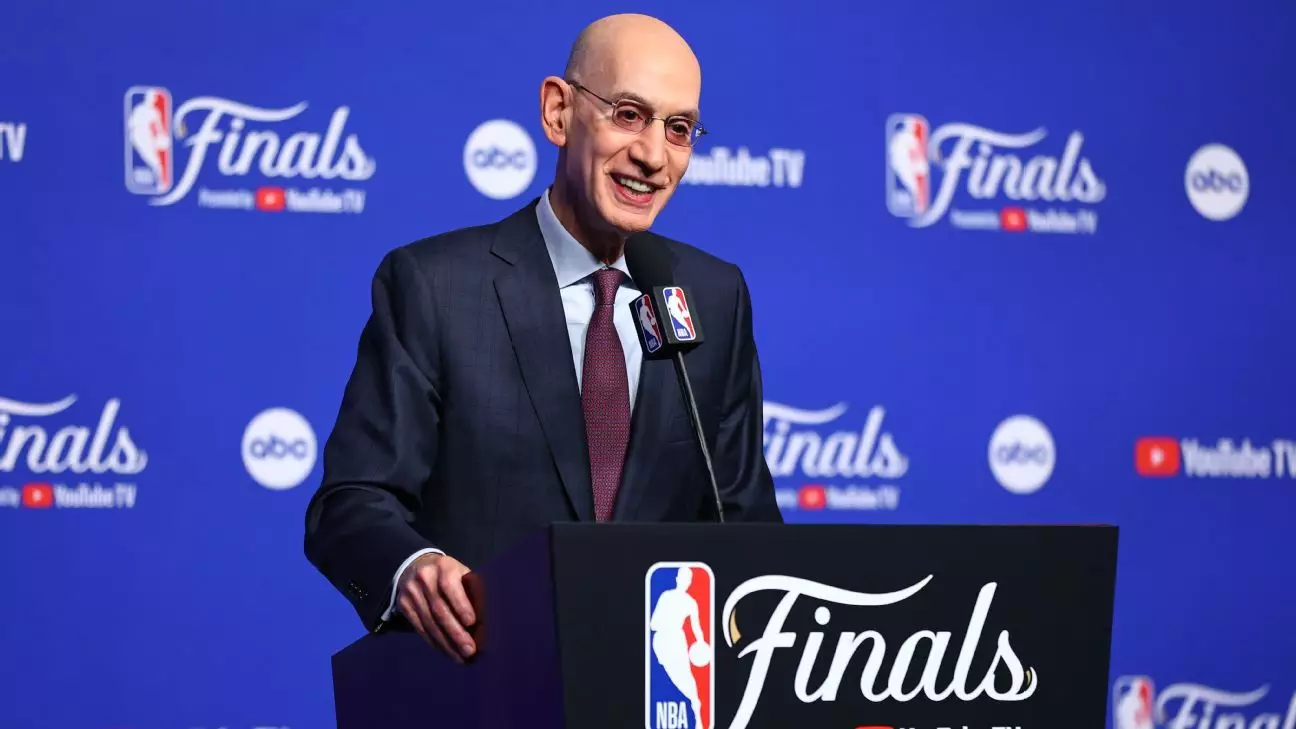The NBA is buzzing with excitement and possibility as discussions around league expansion heat up. Recently, NBA Commissioner Adam Silver expressed optimism about bringing this topic to the forefront at next month’s board of governors meeting in Las Vegas. The atmosphere is charged, with whispers across various cities indicating a significant interest in showcasing new franchises. For a league that last expanded in 2004, this marks a momentous potential shift, signaling not just growth in terms of teams, but also in the diversity of markets and fan bases the NBA caters to.
Silver’s assertion that owners are likely to support a thorough exploration of expansion reflects a pivotal moment in the league’s trajectory. Expansion could breathe new life into the NBA, tapping into underserved regions craving professional basketball. It’s not merely about adding more teams; it’s about enhancing the cultural and economic fabric of the league. The NBA needs to recognize and harness the potential of cities like Seattle and Las Vegas that are chomping at the bit for a franchise of their own.
Walking the Tightrope: Interest vs. Caution
Though enthusiasm for expansion is palpable, Silver remains prudently cautious. In highlighting the need for fairness in the evaluation process, he emphasizes the importance of engaging all potential stakeholders before embarking on this journey. The reality that bringing more teams into the fold is tantamount to “selling equity in the league” underscores the complexity of expansion. For many owners and fans alike, the concern is that more teams could dilute the competitive balance that the NBA has carefully cultivated.
Silver’s ambitious perspective seems well-founded: while there are indeed underserved markets across the United States, the lasting legacy of the league must not be compromised in the pursuit of financial gain. Every franchise addition must resonate with the integrity and prestige of the NBA brand. The potential for these new franchises to enrich the NBA’s history must be weighed against the risks of undermining the league’s competitive spirit.
A Glimpse at Potential Markets
Seattle and Las Vegas are front-runners in the expansion discussion, with their unique advantages. Seattle, long considered a basketball city despite losing the SuperSonics, boasts a passionate and engaged fan base. The possibility of revitalizing the NBA in the Emerald City holds significant promise for not only resurrecting old rivalries but also fostering new ones.
On the other hand, Las Vegas presents a unique opportunity with its growing reputation as a sports hub. The allure of the city has drawn in tourists and residents alike, making it an ideal location for an NBA franchise. The synergy of a professional team within the vibrant casino culture could generate unprecedented levels of engagement and excitement.
Defining the Future: Parity Over Predictability
During his news conference, Silver raised an intriguing point: the future of the NBA may not necessarily hinge on maintaining familiar champion patterns. The recent streak of seven consecutive champions points to a fundamentally healthy competitive landscape. It showcases the league’s strategic maneuvers to foster parity, with less emphasis on predictability.
Silver challenged the assumption that having varied champions year after year is the ultimate goal. Instead, he highlighted the importance of ensuring every franchise has a legitimate opportunity to succeed. This paradigm shift is a crucial element of the NBA’s mission to enrich the sport, making the championship race more exhilarating for fans and players alike.
All-Star Game: An Evolving Tradition
As the league pivots focus towards the upcoming All-Star Game, Silver hinted at a fresh format that could redefine how fans engage with this historic event. Drawing inspiration from the NHL, the concept of a “Team USA vs. the World” format has potential, but the specifics remain in flux. Silver expressed that finding a structure that honors both American and international players—who together represent 30% and 70% of the league, respectively—will be crucial.
This shift appears timely, especially as the NBA looks to promote its brand on national platforms like NBC while coinciding with the Winter Olympic narratives. Integrating this sense of nationalism could not only generate added excitement but also foster a deeper connection between international audiences and the league.
Preserving the Game’s Integrity amidst Change
While bold steps towards expansion and a dynamic All-Star Game format are exciting, Silver has also made it clear that changes to the league schedule—such as reducing the 82-game season—aren’t on the horizon. Money and maintaining fan engagement are pivotal, but the league must also place emphasis on preserving the integrity and rhythm of the game. The assertion that reducing games won’t necessarily curb injuries reflects a deep understanding of the complexities involved in the sport.
In navigating the potential changes ahead, Silver and league officials must strike a balanced chord, ensuring that while they explore innovations, they do not lose sight of what makes the NBA an enduring institution. As conversations around expansion and league evolvement continue, one thing is certain: the landscape of professional basketball is set for an exhilarating transformation.

